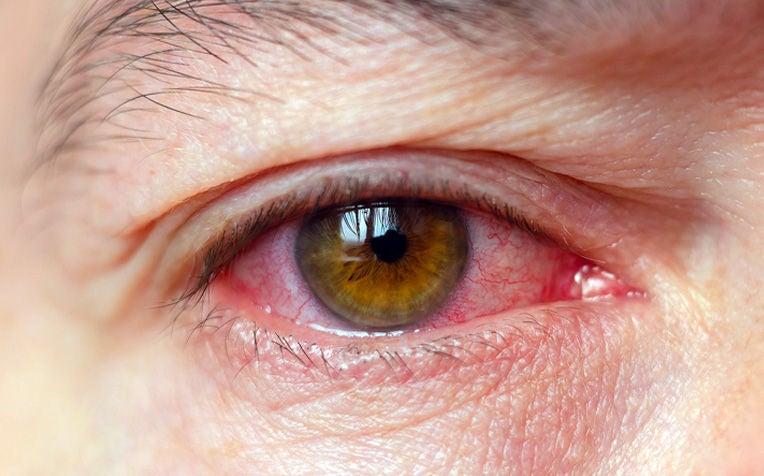
Ocular (eye) inflammation that originates from the uveal tract is commonly known as uveitis.
The eye is shaped like a globe with multiple layers of tissue surrounding a central gel-filled cavity. The innermost layer is the retina which is the light sensitive portion of the eye whilst the outermost layer is the sclera which is made of dense collagen fibres that confer the eye its structure and protect the inner layers. The uveal tract lies in the middle between these two layers and comprises the iris, ciliary body and choroid. It has an abundance of blood vessels to provide nourishment for various important structures of the eye.

Whilst inflammation may occur within any structure of the eye, it most commonly comes from the uveal tract. Such inflammation is called uveitis.
Types of ocular (eye) inflammation
Ocular inflammation is best classified according to the primary site of inflammation.:
- Episcleritis / Scleritis
- Uveitis
- Anterior uveitis also known as iritis or iridocyclitis
- Intermediate uveitis
- Posterior / panuveitis (including retinitis, choroiditis, chorioretinitis, neuroretinitis and retinal vasculitis)
Causes of ocular (eye) inflammation
Ocular inflammation may be caused by an underlying infection or an imbalance of the immune system. At times, uveitis may be part of a systemic disease process in which other parts of the body are affected as well.
However, in many patients with ocular inflammation, a definitive cause may not be elucidated even following thorough investigations. Nonetheless, each disease pattern is commonly associated with several possible diagnoses.
Diagnosis of ocular (eye) inflammation
A careful eye examination by an ophthalmologist is extremely important when symptoms occur.
In addition to examining your eye carefully, your ophthalmologist may order specialised scans to better assess various structures of your eye such as the cornea and retina. Since inflammation in the eye may be due to an underlying infection, your opthalmologist may also consider taking a sample of fluid from within your eye for lab tests.
As some conditions are associated with an underlying systemic disease, your ophthalmologist will want to know more about your general health and well-being and may order investigations such as blood, urine and skin tests or X-rays.
| Condition | Symptoms | Common Causes |
|---|---|---|
| Episcleritis Scleritis | Redness, pain, tearing |
Idiopathic |
|
Anterior uveitis |
Redness, pain, tearing photophobia, elevated eye pressure causing haloes and blurred vision |
Idiopathic Anterior Uveitis |
Intermediate uveitis |
Blurred vision, floaters | Idiopathic intermediate uveitis |
Posterior uveitis | Blurred vision, floaters |
Viral retinitis
|
|
Panuveitis | Redness, pain, floaters, blurring of vision |
Endophthalmitis
Vogt-Koyanagi-Harada Disease Sympathetic Ophthalmia Lymphoma Behcet’s disease Sarcoidosis |
Treatment for ocular (eye) inflammation
"Ocular inflammation should be treated in a timely fashion to prevent lasting problems that could permanently affect your vision," advises Dr Wiryasaputra Shaan, Consultant, Ocular Inflammation & Immunology Department, Singapore National Eye Centre (SNEC), a member of the SingHealth group.
"Five to twenty per cent of legal blindness in developed countries is caused by ocular inflammation," she adds.
Complications of ocular inflammation include:
Glaucoma – Increased pressure within the eye compromising the health of the optic nerve
Cataract – Clouding of the natural lens in the eye
Cystoid macula edema-swelling in the central portion of the retina crucial for good reading vision
Neovascularisation – Formation of new blood vessels in the eye that may lead to retinal detachment, bleeding within the eye or retinal detachments
Anterior uveitis is the most prevalent form of ocular inflammation and carries the best prognosis. Eye drops form the mainstay of treatment in anterior uveitis. Your ophthalmologist will typically prescribe a course of anti-inflammatory eye drops and dilating eye drops to reduce your pain and prevent permanent structural damage.
For other more severe forms of inflammation, oral medication or injections may be necessary. As it is not uncommon for ocular inflammation to recur, most patients require long term follow up or in some cases, maintenance therapy to prevent relapses.
Ref: H24
Contributed by
















 Get it on Google Play
Get it on Google Play